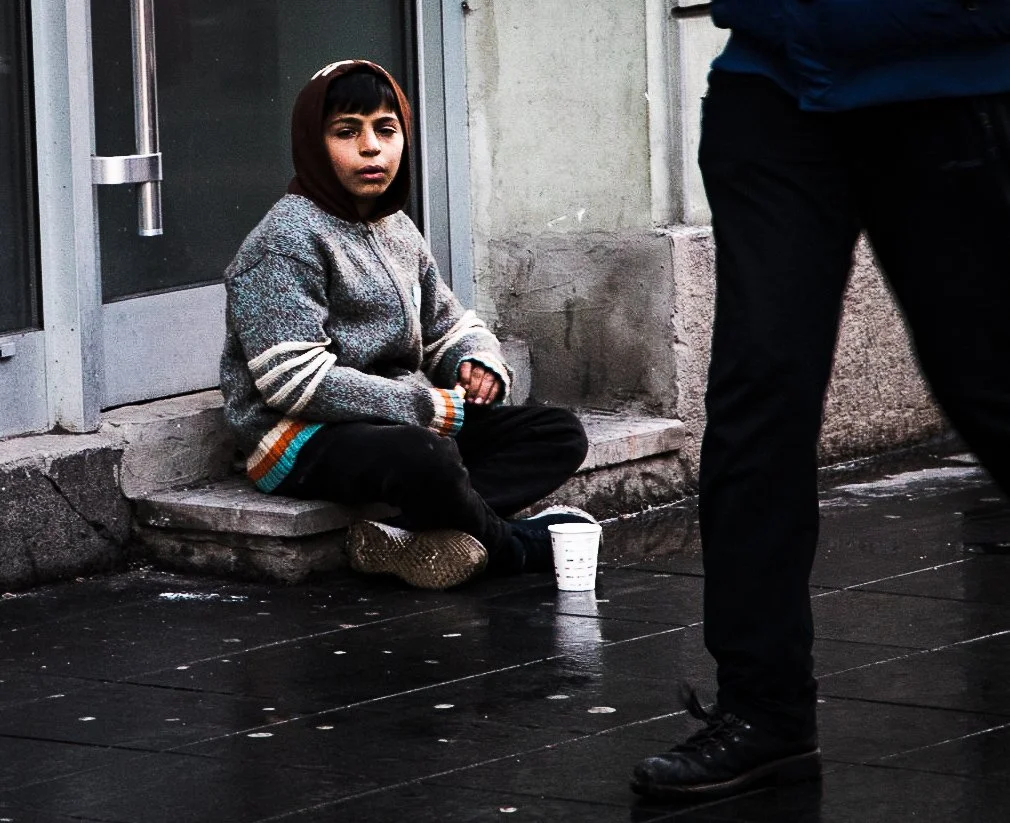Bosnia and the Migrant Crisis (1)
(migrant with tissue packets to sell, taken in 2019)
On Sunday 11 February 2024, TRT World released a report showing 41 graves in Bosnia, near the Serbian border along the Drina River. These graves are marked with the Bosnian shorthand for unknown. Local search and rescue say they contain the bodies of unidentified migrants who were pulled dead from the river.
This is just one snippet from the ongoing story of migrants who are trying to cross into the European Union through Bosnia.
According to the European Civil Protection and Humanitarian Aid Operations, “more than 110,000” refugees and migrants arrived in Bosnia and Herzegovina through the “Western Balkans route” since 2018.
For three months in 2018/2019, right before the Pandemic, I was in Sarajevo, the capital of Bosnia.
At this point, the situation was being referred to as a migrant crisis.
The streets were packed.
Migrants from places such as Morocco and Afghanistan were on every street, every corner, every alley.
While many resided in camps outside the city proper, many chose to find abandoned buildings to sleep in, a commentary on the state of the camps at the time.
In the winter, Sarajevo has some of the worst air quality in the world, with heavy smog prompting the locals only to go out wearing thick masks. Despite this, migrants would spend their days in the cold and the smog, trying to sell individual packs of tissues or bottles of water they bought from local supermarkets in bulk.
(taken in 2019)
This was in a desperate effort to raise enough funds to pay for what many called the “game”.
The “game” refers to paying a smuggler to assist them in attempting to cross the border into Croatia, and by extension, the EU. The amount of money they needed to raise wasn’t insignificant, with a source saying it was about EUR 2,000. The packs of tissues and bottles of water would be sold for about 1 KM (EUR 0.51).
While volunteering in a building that was used to house families, I discovered that even the children, some very young, were familiar with the idea of the “game”.
One day a child would be missing from the class we held weekly. When asked after, the other children would say that the missing child and their family had gone on the game.
(taken in 2019)
Many of these attempts to cross the border would often fail with many reporting injuries inflicted upon them by the Croatian border patrol. These stories often portrayed an excessive use of violence with physical marks, scars, and cuts visible to those who shared stories about their attempts.
One man, claiming to be Palestinian, showed me cuts across his face which he said were caused by Croatian police during his attempt to cross the border.
Another account reports that after they were caught by the Croatian border patrol while trying to cross the river, the patrol proceeded to seize all their possessions and dump them in the river before sending them back into Bosnia.
Not only did the migrants face dangers during their attempts to cross the border but at the time they also faced danger from their fellow migrants.
Since the migrants often didn’t speak the same language as each other, speaking Dari, Urdu, Arabic, and Kurdish their ability to communicate with each other, let alone with the local population, was minimal. They often resorted to using scraps of English to communicate with each other.
The word “problem” was often used to indicate aggressive intent, or a willingness to escalate a situation. With the abovementioned linguistic barrier, it can be surmised that there was no easy way to de-escalate situations.
In my own experience, two migrant teenagers tried to get into a bag I had on my back. One kept trying to circle me to get to the bag, while the other tried to keep my attention and moved a hand around in his pocket, as if to indicate he had a weapon, and kept aggressively saying to me “Problem?”
Tensions would spike, and sometimes violently escalate between migrants. With no recourse to police or legal mechanisms, some often felt the need to be armed with knives.
Life for a migrant in Bosnia back then was harsh and sometimes brutal.
This was the state of affairs when I left the country in 2019.
There appeared to be no end in sight and no one was sure what the future would hold.
So much has happened since then.
So five years later, at the beginning of February, I returned to investigate how this issue developed over the years, and what has become of the Bosnian migrant issue.
These upcoming articles will detail what has become of Bosnia’s migrant crisis.


